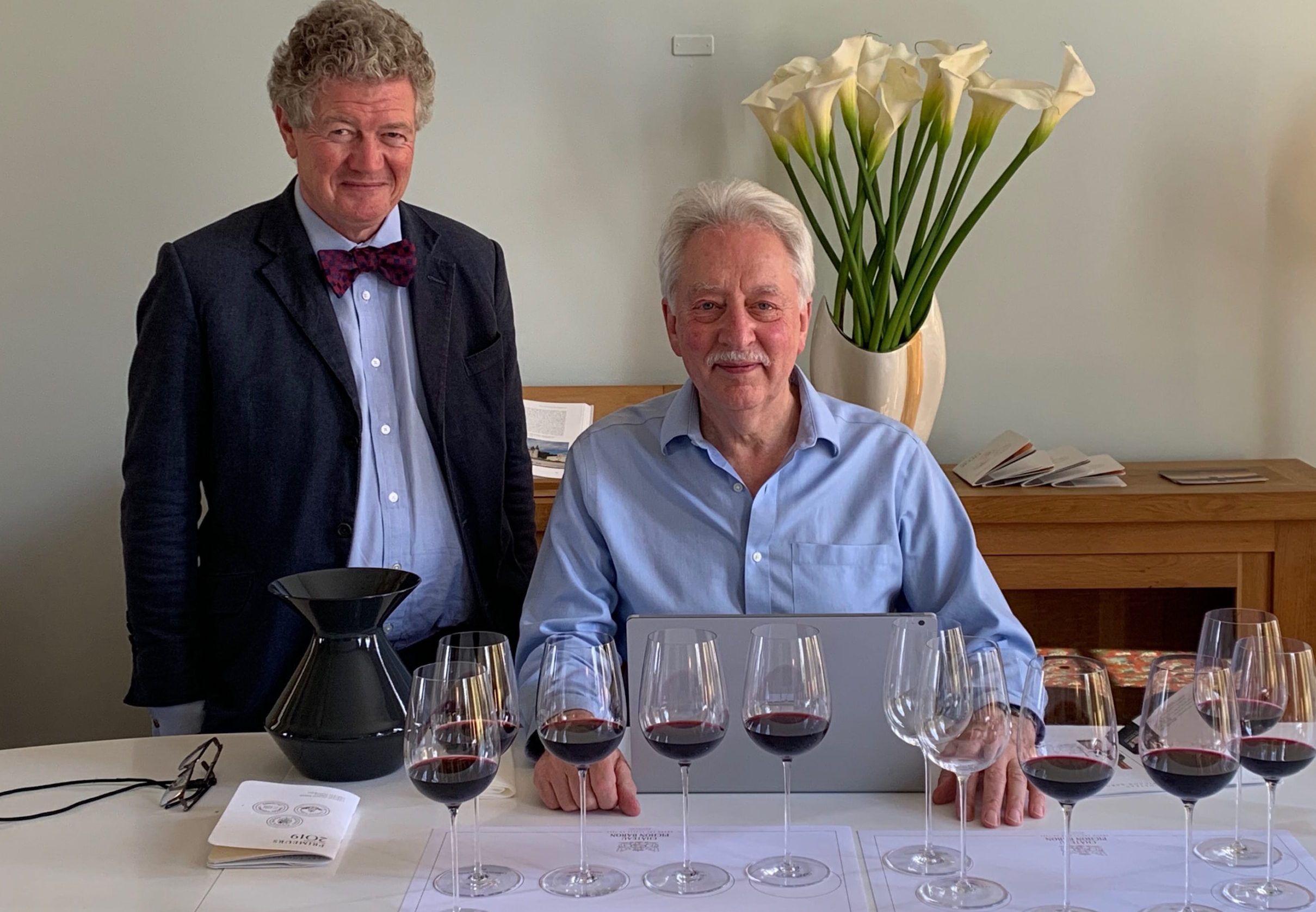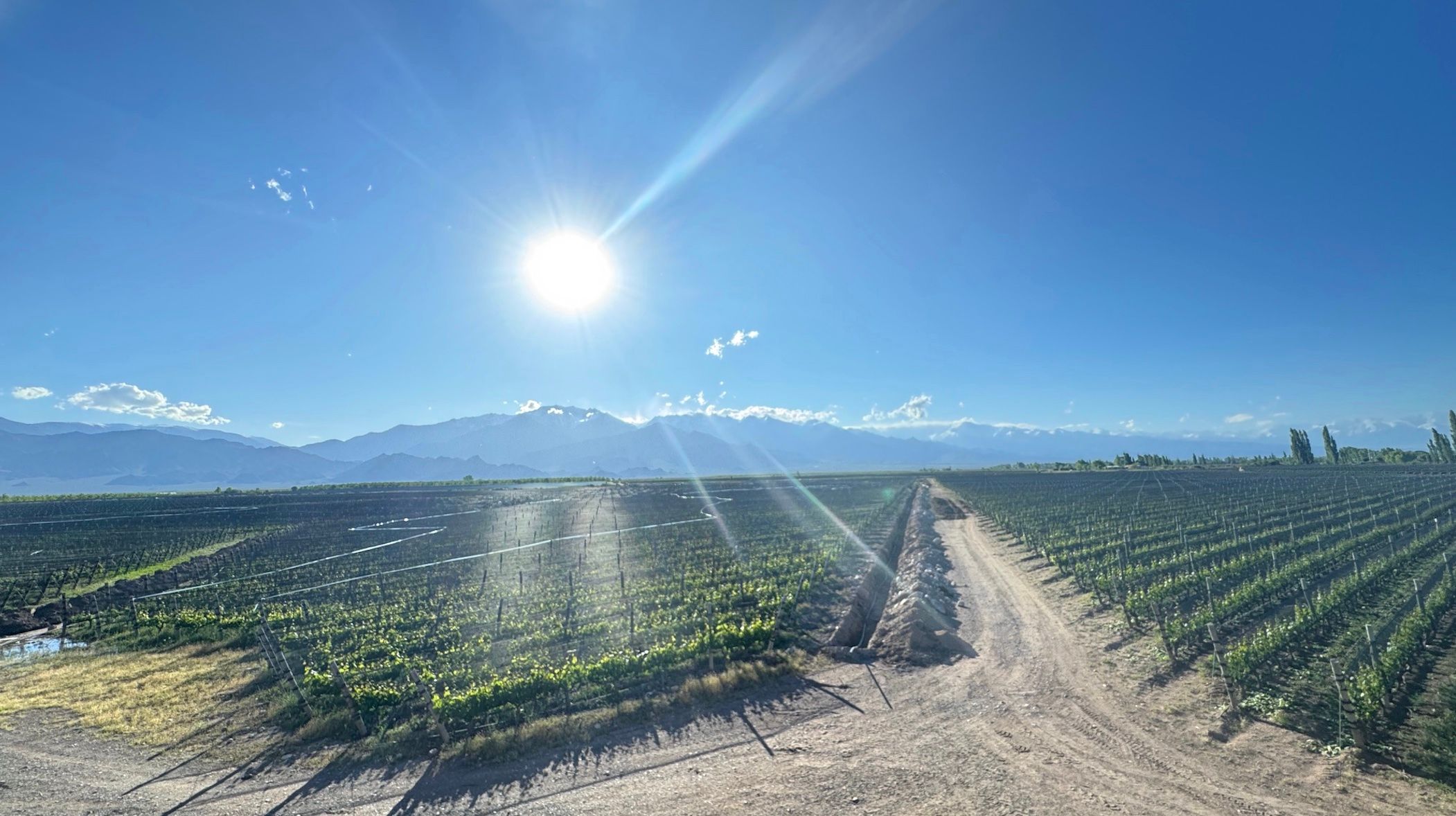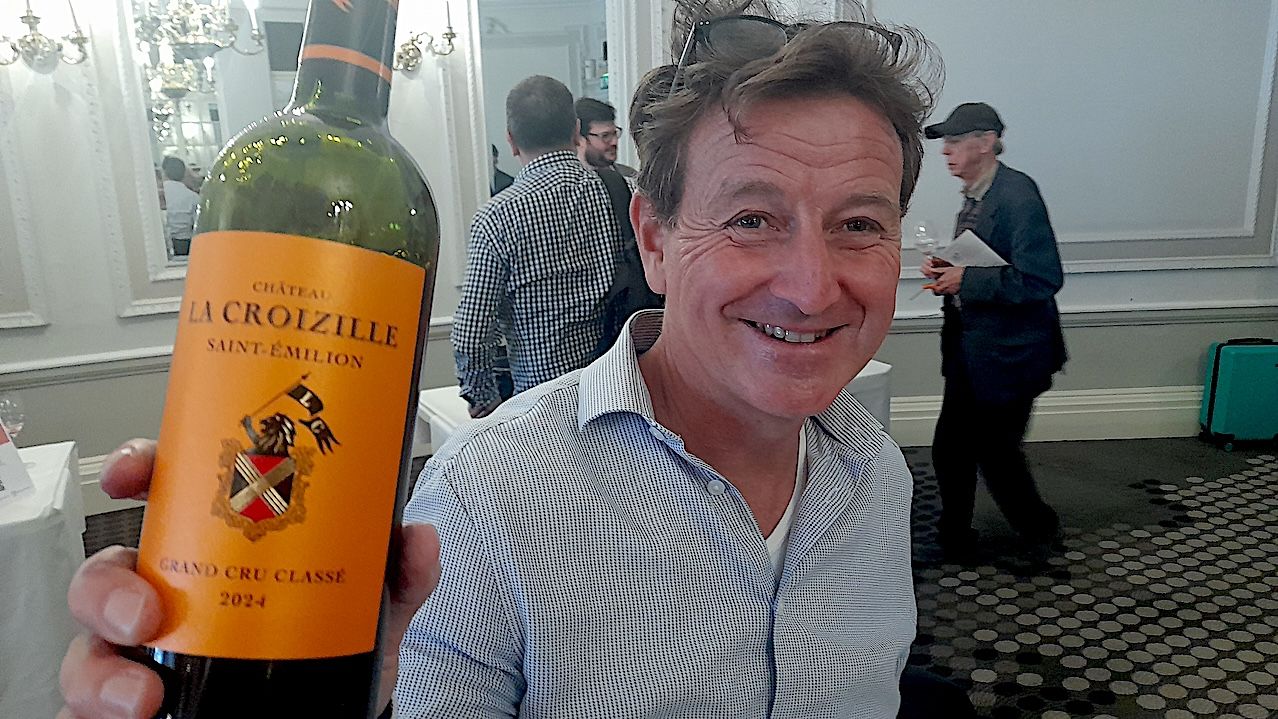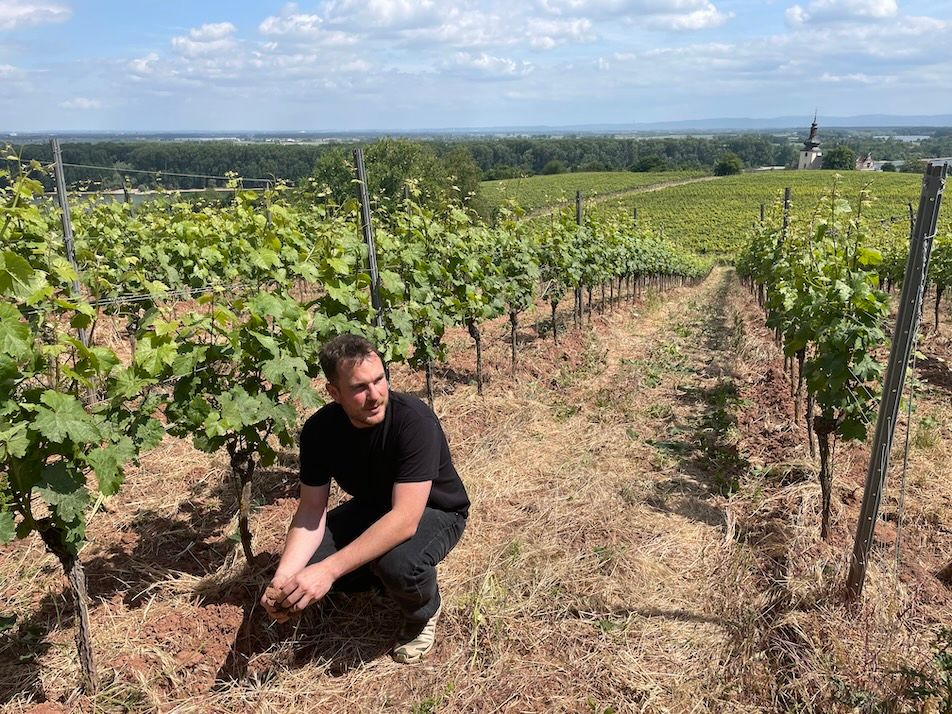The third in a row of exceptional but stylistically very contrasting vintages, 2020 was particularly successful for the red wines, though these are more variable, in both style and quality, than the 2019s. So, to an even greater extent than usual across this large and varied region, it is not an easy vintage to pigeonhole.
On a personal note
I spent 16 days this April tasting the 2020s in Bordeaux. I was, I think, the sole Brit scribe or merchant who had made the journey from the UK, after jumping through numerous Covid-related hoops. I decided shortly after arriving that this would be my last en primeur exercise. There are other things I still want to do in life, and the Schuster genes are, historically anyway, not long-lived!
On Sunday, September 23, 1979, I arrived in Bordeaux to spend two years teaching English to the Total Oil scientists, in a little château a stone’s throw from Haut-Brion. Two weeks later, one of my now oldest friends, Martin Sinkoff, brought me a half-bottle of claret to taste blind before dinner. We were at my small duplex flat on the little cobbled rue Dufau, behind Bordeaux’s town hall, having met just a week before while visiting the Graves. In those days, you could go to a first growth and come away with a bottled barrel-sample. Martin’s half-bottle turned out to be a cask-sample of 1978 Latour! In effect, my very first (very austere!) informal en primeur taste.
I still have that Echantillon label.
Mid-morning on Friday, April 30 this year, before starting the long drive up to Calais, I spent a couple of hours in the company of Baptiste Guinaudeau and Omri Ram in their new tasting room at Château Lafleur. It was my last appointment on this occasion. It was also my last (totally beguiling) formal en primeur tasting. And they gave me a 2020 Lafleur Echantillon label. A nice pair of “bookends” then, to nearly four decades of tasting and reviewing infant Bordeaux.
For the past 18 years, from the 2003 vintage on, I have written up the latest year for The World of Fine Wine, and for a few days most years, I have had the pleasure of my editor, Neil Beckett, as a tasting companion. On Friday, April, 16 (my 73rd birthday), I was the first to taste Petrus this year. We tasted in the entrance hall on a small chest- high table, not quite high enough to be comfortable for my laptop. I had gone in search of a large book to put under my computer and had found Jane Anson’s heroic tome Inside Bordeaux, as the perfect laptop rest. “I shall tell Jane what you think of her book when I see her!” quipped Olivier. While I was writing a few notes in the car park, before leaving, Jane arrived and parked next to me (one of life’s many small ironies). Her head was immediately buried in her smartphone. And though I called out to her as she left for the château, either her headphones were in, or my voice was simply buried by the sounds of vineyard machinery. In much the same way, my annual notes and report, always out in print well in the wake of any primeur campaign, have immediately been buried in the index-free depths of The World of Fine Wine, for all except WFW subscribers, metaphorically gathering dust almost at once.
This is one principal reason why, on this final occasion, we are making my notes and a brief introduction freely available at the beginning of the campaign. Another reason was spelled out by Domaine de Chevalier’s Olivier Bernard: “As you are the only member of the UK-based wine fraternity to make it this year, you have a responsibility to get your notes and report out as soon as you can!”
So, here they are. Farewell, en primeur, but, because there are still other projects I look forward to pursuing there, au revoir, Bordeaux.

Michael Schuster tasting 2020 Bordeaux at JP Moueix
2020 Bordeaux: the Headlines
Ever since my first en primeur review for The World of Fine Wine, of the 2003 vintage, I have summarised the year with a list of ten “headlines.” So, rather than a detailed, discursive, analytical background to the 2020 vintage, I will just enlarge on those, as an account of the wines, in the hope of helping readers decide what to buy in the en primeur market.
- Laying down
For the best wines, by any measure, this is another outstanding year for the red wines.
- Quality
Because of the vagaries of the viticultural year, there is not the consistency of quality seen in 2019 and 2016, and the way in which they are successful in the different locations is more variable. But the best, in their greater variety of styles, and at every level, are very much on a qualitative par with their 2019, 2018, and 2016 counterparts. It serves little purpose to try to say that one is “better” than the other.
- Style
Structurally, the 2020s are lower in alcohol than 2018 (especially) and 2019, while mostly not as moderate as 2016. Acidity levels vary considerably, from mouthwatering, ripe red-fruit vitality, to relatively supple and yet very fresh in feel from their aromas—akin to (though obviously very different from) the freshness conveyed by mint or menthol, for example. And while tannin levels are high in terms of the numbers, there is a marked winemaking tendency toward more refined textures, from much gentler winemaking and winemaking aims.
- Comparisons with other fine vintages?
If one must generalize … Of the trio, 2020’s proportions are less Wagnerian than those of 2018, and they have a more pronounced linear and tannic structure than 2019. But I think more useful comparisons are with 2016 and 2010. A touch more sinew, and a bit more flesh, perhaps, than 2016, considerably less tannic muscle than 2010. A sort of modern, warm-climate classicism? The best have a wonderful, “compact,” firm-fleshed core-fruit, beautifully complemented by a fine tannin frame, plus a diversity of fresh impressions. At Pontet-Canet, Justine Tesseron’s pithy summary was: “Une belle plénitude, bien définie. La personne qui n’est pas contente a un problème!” Which you might render as: “A lovely abundance, nicely defined. Anyone who isn’t happy has a problem!” Nicely put!
- Grape varieties
All the grape varieties did well, white and red. Merlot is perhaps the standout variety, picked fully ripe in ideal conditions, and enriching reds throughout the region; but the best Cabernet Sauvignons, small and thick-skinned, made wines of considerable complexity and finesse at much more modest alcohol levels.
- White wines
The best dry whites are very good, fresh and lively, but softer styled than the vital 2019s and without their aromatic projection and complexity. For Sauternes, another autumn of woe, where the weather pattern precluded the development of quality botrytis to any extent; a very small crop here, with a handful of standout wines for those who could afford to wait, but more that are in a slender, if fine, aperitif style.
- Regional / communal standouts?
A Left-Bank or a Right-Bank year? This commune, that commune? I’m not sure this is a helpful way to think of 2020. There are great successes in every commune, and I don’t think you can identify a weak one. The Left-Bank wines are, on the whole, naturally more restrained because of their proportion of Cabernet Sauvignon, and this is where you will find more of the leaner, more red-fruit-brisk wines. But Cabernet Sauvignon made wonderful wines this year, too, and Merlot’s richness and flesh worked to the benefit of the Left Bank as much as the Right; look at my selection of Médoc and Haut-Médoc wines, with their high proportions of Merlot. And a particular sweet spot for me this year (a bit like 2015?) was Margaux, many of which have a high proportion of Merlot for the Left Bank. The other real sweet spot was the Pomerol plateau—where there are few inexpensive wines, but where there is still fair value (in the Bordeaux context) to be found for excellent quality.
- The viticultural year
In the vineyards, 2020 was difficult, especially early on, during a very wet spring. The long, hot, very dry summer was preceded by particularly challenging mildew attacks, with an opportune, dry, early flowering window between early May and early June rainfall, an ideally positioned interval for most but by no means for all. Both circumstances accounted for eventual variations in yield and ripeness, as did how your individual soils, subsoils, geology coped with the summer drought and, subsequently, the caprices of mid-August and September rainfall.
- Harvest conditions
An early harvest, with most fruit picked by the end of September. Unlike the prolonged and perfect harvest conditions of both 2018 and 2019, however, 2020 was much more variable. The warm, dry first half of September provided ideal weather for picking perfectly ripe Merlot, but the cooler, wetter second half of the month made it trickier to pick quite as consistently fully ripened Cabernets. The picking conditions for dry whites were excellent in late August and early September, whereas they were very far from ideal for the development of fine botrytis across the autumn for the sweet wines.
- Harvest Size* (AOP Bordeaux): Considerable variation between properties, but overall yields were lower due to the viticultural circumstances—see headlines 5 and 8 above. 4.402 million hectoliters; 9% (to the nearest 0.5%) down on 2019 (4.864 million hl); 11.5% down on 2018 (4.986 million hl); 17% down on 2015 (5.296 million hl); 23% down on 2016 (5.772 million hl); 2010 (5.707 million hl); 2009 (5.745 million hl); 26.5% down on 2005 (6.003 million hl). * Source: Douane
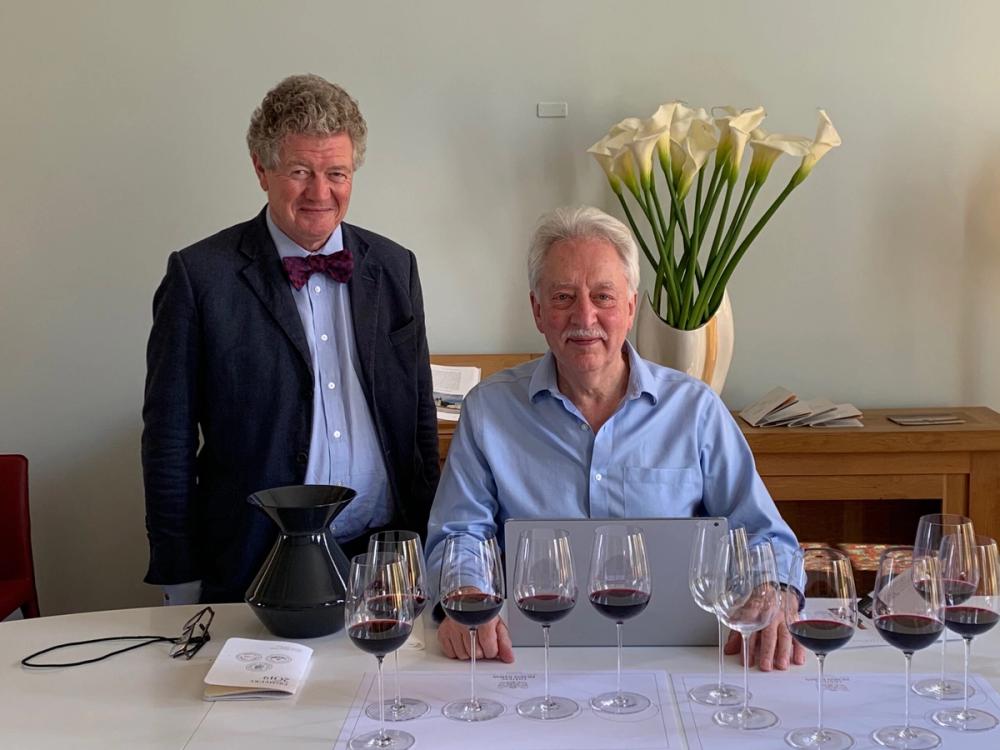
Tasting at Pichon Baron with Christian Seely
Changing ideals in Bordeaux
Over the past decade, and in particular over the past five years, there has been a clear change in red-winemaking ideals; a move away from an emphasis on extraction, structure, abundant new wood, epitomised perhaps by many wines in 2005, 2009, 2010, to a much gentler, more moderate approach to extract, tannin texture, oak ageing. What I might term the “brutalist” style has not disappeared completely (and there appears still to be a market for it, perceived or real), but it is now very much behind the curve, and a new paradigm has emerged. This is epitomised, for me, by three names over the past five years: Lafon-Rochet (Basile Tesseron), since 2016 especially; Beau-Séjour Bécot (Juliette Bécot and Julien Barthe), where there was a veritable stylistic volte-face in 2017; and Giscours (Alexander Van Beek) in 2020.
All of these names now, without any loss of intensity of flavour, have a restrained fineness of texture, where the tannins are effortlessly integrated in the overall impression, which allows the heart of the wine to be perceived without the distraction of a strong winemaking style, and where the consequent transparency of taste allows the vineyards’ distinctive character to be expressed more clearly. A resetting of the pendulum, a different vision, which looks for wines that are finer in feel, more graceful and easier to drink as well as more distinctive, but which will age as well as any hitherto. An ideal achieved first in the vineyard by attention to individual plants and plots, and then by increasingly bespoke winemaking, based on the ripeness of separate parcels at harvest—specific vines, even—sometimes Sauternes-like tries, and then a gentle hand on the winemaking tiller. This is at the heart of the approach of Oenoteam’s Thomas Duclos, increasingly influential in the region, and the advisor at both Beau-Séjour Bécot and Giscours. It makes for red Bordeaux wines that are a revelation.
Bordeaux 2020 recommendations and scores
Buying en primeur: Quelle choix!
The top, speculative, commodity-market names apart, 2020 presents a wonderful opportunity to buy Bordeaux to cellar—for drinking. A first-rate vintage, from which to top up an existing cellar or, indeed, lay the foundations of a new one! So, either way, I wouldn’t hesitate. As you will see from my notes, I am enthusiastic about a great deal—this is a very fine vintage, with numerous wines that will give enormous Bordeaux pleasure from around £15 a bottle all told, to … well, think of a number! And broachable from a couple of years down the road, to sufficient decades to see you out.
My selection at up to £600 a case / £60 a bottle (including taxes)
Of the 200-plus notes in my complete report, this is to help you with a bit of triage—from my palate’s point of view. Which is, that I don’t care for any sort of excess—alcohol and/or tannin, in particular—and I want to feel able to drink rather than just admire. Though, as you will see, I can readily admire what I wouldn’t necessarily want to drink!
I have selected my favourite 30 or so wines, grouped into likely en primeur prices of under £200, under £400, and under £600 per case of 12 bottles. When eventually choosing, if you divide the 12-bottle case-price by ten, you will get a good guide to the final, tax-inclusive bottle price.
Those with an asterisk* (half of the selection), I consider likely to represent particularly good value for what they are—what the French call valeur qualité prix!
Under £200
Le Boscq, St-Estèphe; La Gurgue, Margaux; Goulée, Médoc*; Chapelle de Potensac, Médoc
Under £400
Pagodes de Cos, St-Estèphe; Lafon-Rochet, St-Estèphe*; Pibran, Pauillac; Réserve de la Comtesse, Pauillac*; Cantemerle, Haut-Médoc*
La Lagune, Haut-Médoc*
Under £600
Petit Lion de Léoville-Las-Cases, St-Julien; Giscours, Margaux*; Kirwan, Margaux* ; D’Issan, Margaux*
Brane-Cantenac, Margaux*; Alter Ego, Margaux
My preferred wines outside the first growths
Under £1,000 probably
Calon-Ségur, St-Estèphe; Lynch-Bages, Pauillac;
Fonbel, St-Emilion; Santayme, St-Emilion*; Joanin Bécot, Castillon*;
Haut-Bailly II, Pessac-Léognan; Langoa Barton, St-Julien; Lagrange, Pomerol*; La Grave, Pomerol*
La Petite Eglise, Pomerol; Carbonnieux Blanc, Pessac-Léognan
La Clotte, St-Emilion; Beau-Séjour Bécot, St-Emilion; Beauregard, Pomerol*; Petit Village, Pomerol*; Suduiraut, Sauternes
Haut-Bailly, Pessac-Léognan; Les Carmes Haut-Brion, Pessac-Léognan
£1,000+ My two absolute favourites: Figeac, St-Emilion; Cos d’Estournel, St-Estèphe; Closely followed by: Palmer, Margaux; Pichon Lalande, Pauillac; Léoville-Las-Cases, St-Julien
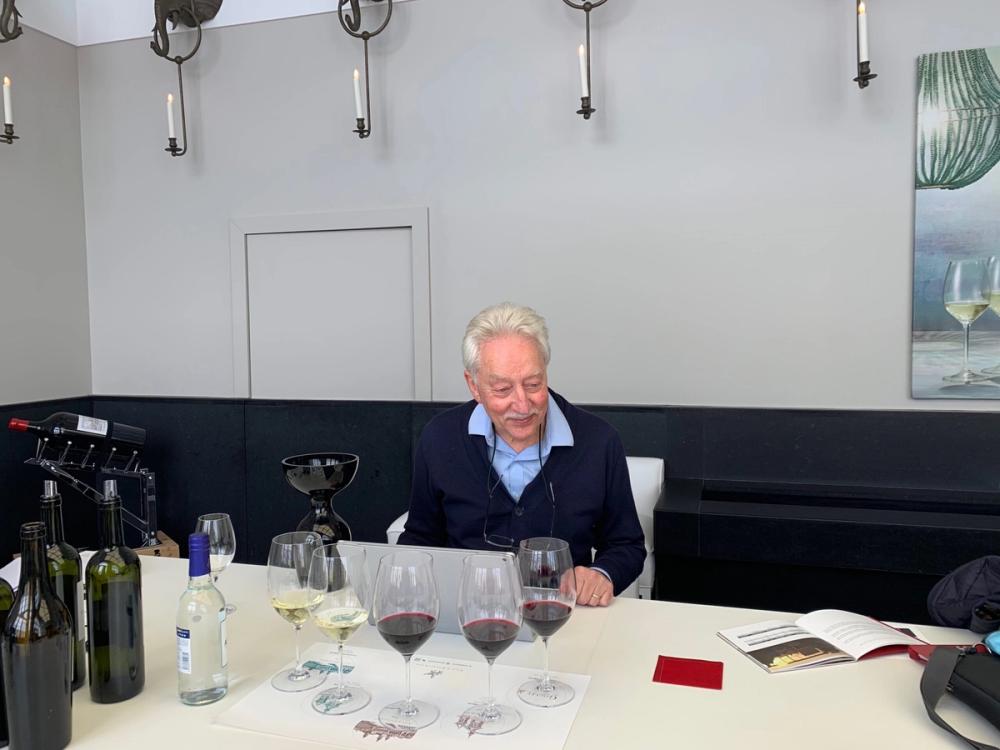
Tasting at Cos d’Estournel
Three personal “group” soft spots as 2020 vintage yardsticks
On the Right Bank: Établissements Jean-Pierre Moueix, where I noted, as I tasted: “A wonderful range of wines, what a treat!” Edouard Moueix has fine-tuned his father Christian’s reserved and “picked-on-the-earlier-side” style, retaining the “drinkability” of the wines, but also appealing to the taste for something a little richer. Theirs is a magnificent 2020 range. The top wines (Belair-Monange, Trotanoy, La Fleur-Pétrus) should be no-brainers for those with the wherewithal. The real joy for many, however, will be among the middle-rank, great-value wines, such as Lagrange, La Grave, or Latour-à-Pomerol.
On the Left Bank: Léoville-Las-Cases (Petit Lion, Potensac, Clos du Marquis), a range of wonderfully complete and rewarding wines at all the quality levels. Beautifully textured, without a trace of excess, benchmark delicious maritime- temperate Médocs. And Cos d’Estournel (Goulée, Pagodes, Cos Blanc): First-rate dry whites, remarkable second wines, and a Cos grand vin which, for most of the past decade, has been at once traditional, in the best sense, and utterly outstanding in quality, articulating to perfection its great slope and its proximity to Lafite.
For the full 20,000 word 2020 Bordeaux report subscribe to World of Fine Wine.
